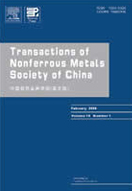3D inversion imaging of self-potential current source induced by mineral polarization
(1. School of Geosciences and Info-physics, Central South University, Changsha 410083, China;
2. Hunan Key Laboratory of Nonferrous Resources and Geological Hazard Detection, Changsha 410083, China;
3. Key Laboratory of Metallogenic Prediction of Nonferrous Metals and Geological Environment Monitoring, Ministry of Education, Central South University, Changsha 410083, China;
4. School of Earth and Space Sciences, Peking University, Beijing 100871, China)
2. Hunan Key Laboratory of Nonferrous Resources and Geological Hazard Detection, Changsha 410083, China;
3. Key Laboratory of Metallogenic Prediction of Nonferrous Metals and Geological Environment Monitoring, Ministry of Education, Central South University, Changsha 410083, China;
4. School of Earth and Space Sciences, Peking University, Beijing 100871, China)
Abstract: An innovative gradient inversion approach employing the natural element method within the framework of least square regularization was proposed to enhance the quantitative interpretation of self-potential (SP) data originating from mineral polarization. The results indicated that the natural element method effectively addressed the challenge of subdividing complex resistivity models and aided in the accurate forward calculation of SP. By applying this approach to synthetic SP data and lab-measured SP data associated with redox electrochemical half-cell reactions of iron-copper metal blocks within the geobattery model, the 3D fine structure of buried orebody models was successfully reconstructed and the spatial distribution of SP current sources was mapped. This study significantly contributes to understanding the quantitative relationship between the polarization process of metal deposits and their corresponding SP responses and provides a valuable reference for delineating metal deposits in both terrestrial and marine environments through SP surveys.
Key words: mineral polarization; self-potential; natural element method; gradient inversion

